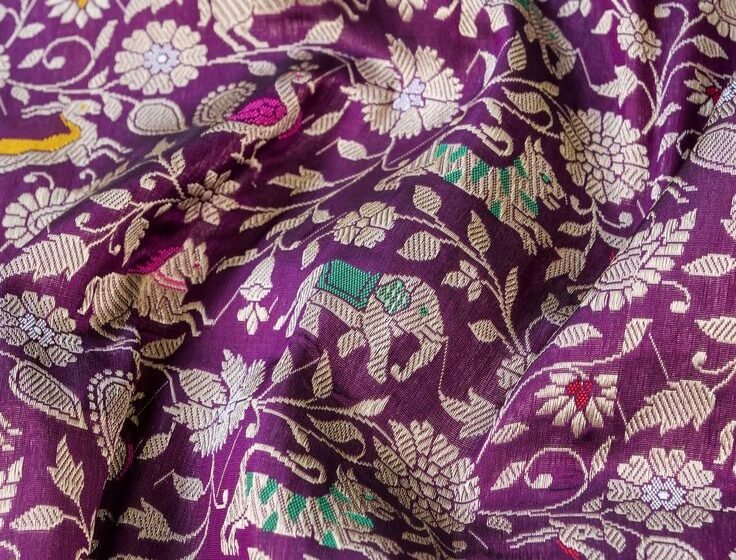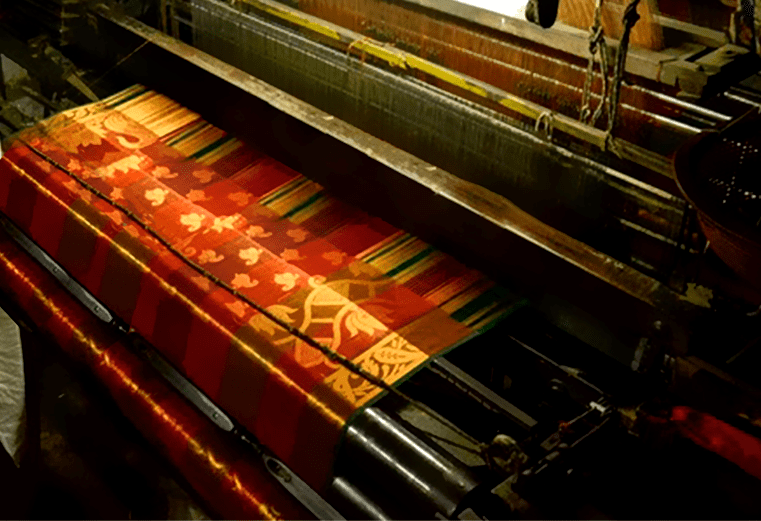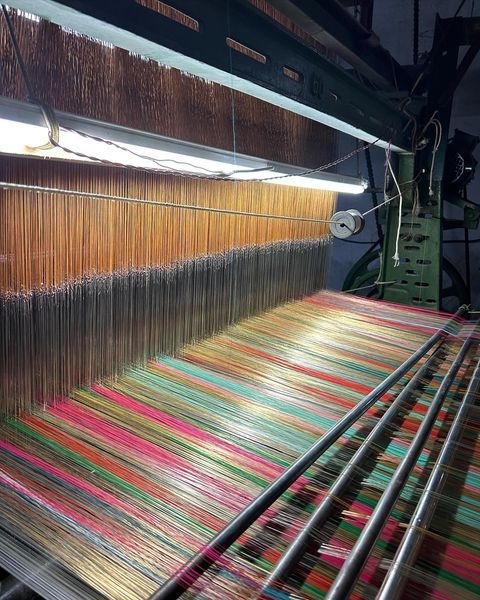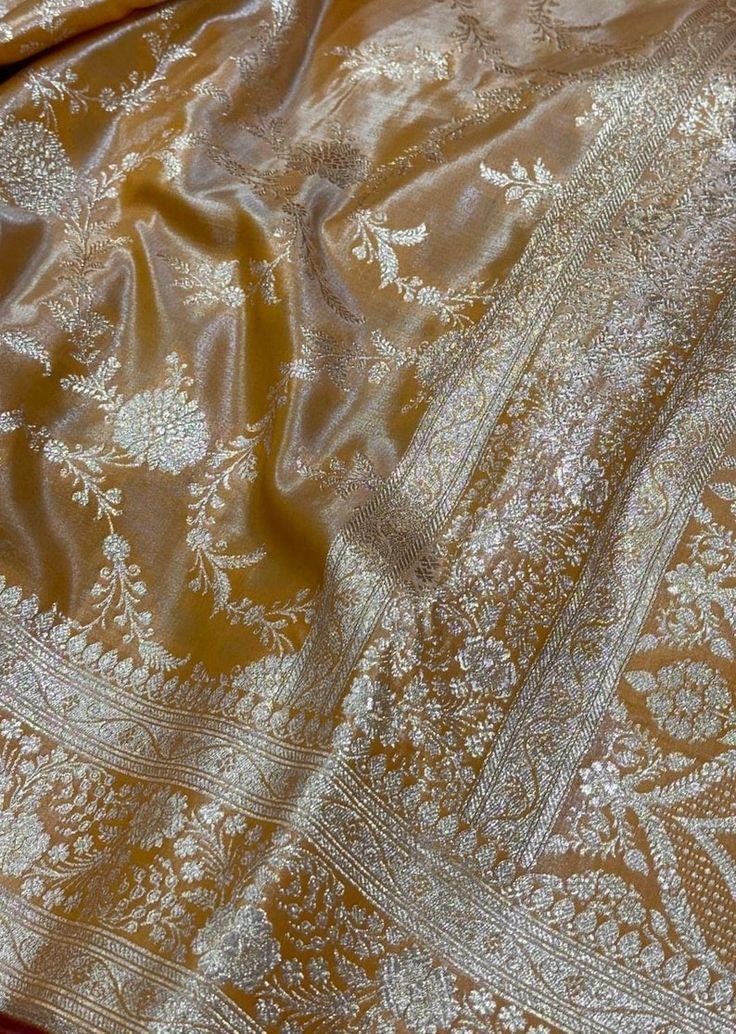Banarasi Saree: The Timeless Elegance of Indian Handloom

The Banarasi saree is no mere clothing but the very embodiment of India’s goodwill, culture, and exquisite craftsmanship. Originating from the ancient city of Varanasi (Banaras) in Uttar Pradesh, this splendid hand-woven silk saree symbolizes luxury, tradition, and art. The intricate brocade work, pure silk, and rich patterns have all crowned the Banarasi saree as a clothing item that defines the desired tradition and wedding custom for an Indian bride and retains its esteem as an heirloom over generations.

Over decades, the Banarasi saree has transcended its traditional attire to become one of the most-loved fashion statement brands in the world. This intricate weaving pattern engraved by the impressiveness of Mughal art and architecture enchants beauty aficionados all over the world. This article discusses the history, craftsmanship, cultural significance, and contemporary relevance of the Banarasi saree, shedding light on why it continues to hold a special place within this realm that both changes with time and is rigid.
History of Banarasi Saree
The history of Banarasi sarees traces its roots back to ancient India and deeply intertwines with Varanasi, the cultural and spiritual nucleus. The practice of weaving these sarees gained momentum during the Mughal era when elements of Persian influences were introduced into Indian textiles. The art of Banarasi weaving prospered wherein intricate patterns composed a fusion of Persian and Indian aesthetics.

- Early Beginnings: Banaras has been a great centre for textile production since at least the 2nd century CE. This art was characterised by the use of fine silk and gold thread for weaving. During this time the Banarasi textiles had acquired the reputation of being elegant and intricately designed.
- The Mughal Influence: Persian and Mughal motifs of floral patterns, vines, and complex geometric designs took centre stage as the quintessential signature of Banarasi weaving during this period. The use of gold and silver zari (brocade) work elevated the saree into a luxurious garment fit for royalty.
- Decline during British Colonialism: Banarasi weaving fell into decline during the British colonial period due to competition from machine-made textiles. The skilful weavers of Banaras naturally had to invent their designs and techniques for survival in this traditional craft. With these innovations and developed techniques, Banarasi weaving stood amidst the harsh changing factors that threatened its survival and further flourished.
- Post-Independence Revival: The Banarasi saree experienced a rebirth after India attained independence. It symbolized bridal attire and was celebrated all over on cultural and aesthetic grounds. Revival through government initiatives to popularize handloom industries also helped the Banarasi saree resurge.

Craftsmanship: The Art Behind the Banarasi Saree
The assembling of a Banarasi saree is highly labour-intensive and can take anywhere from a few weeks to months, depending on the intricacy of the design. Each saree can be termed a masterpiece, which mirrors the skill, patience, and creativity of the weaver.
- Materials Used:
- Traditionally, Banarasi sarees consist of pure silk (known as Katan), with its cotton variants, georgette, and organza becoming popular as well nowadays.
- Zari threads made of gold, silver, or copper are used to create the intricate patterns adorning the sarees.
- Weaving Techniques:
- Here the traditional handloom weaving is used, where the basic fabric is first introduced, and then fabrication of the brocade design follows.
- A special technique known as kadwa weaving is used to form these elaborate designs which are effectively embossed onto the fabric.
- Motifs and Patterns:
- Kalgas (floral patterns), bels (vines) and jhallar (border designs).
- Common in the Mughal style, themes include domes, arches, and foliage. Some sarees feature depictions of Indian mythology and religious themes.
- Types of Banarasi Sarees:
- Pure Silk Banarasi Saree (Katan): Bearing smooth texture with a luxurious sheen.
- Organza Banarasi Saree: Characterized by zari and brocade work on lightweight fabric.
- Shattir Banarasi Saree: A modern variant of a simpler style.
- Georgette Banarasi Saree: Lightweight, easy to drape, suitable for casual occasions.
- Tanchoi Banarasi Saree: Known for its intricate weaving and lack of zari work, often featuring paisley patterns.

Cultural Significance of Banarasi Sarees
Banarasi sarees constitute the pride of North Indian traditions and bear great cultural significance. They are considered one of the fundamental items in a bridal trousseau and are often passed down as family heirlooms.
- Weddings and Festive Occasions:
- Being the epitome of bridal wear, a Banarasi saree epitomizes elegance, affluence, and tradition.
- Banarasi sarees are donned during festivals like Diwali, Durga Puja etc to display heritage, and so forth.
- Symbol of Status:
- Banarasi sarees enjoyed the cachet of a status symbol, worn exclusively by royal and elite figures. Even today, possession of a Banarasi saree bespeaks sophistication and good taste.
- Religious and Spiritual Connections:
- Varanasi is the birthplace of Banarasi sarees; besides bearing religious and spiritual significance for Hindus and Buddhists, the motifs on Banarasi sarees are often drawn from Indian mythology, often depicting Lord Krishna, Radha, and Ganesha.

Challenges and Modern-Day Revival
The Banarasi saree industry, which has a glorious heritage, is struggling today with proximate competitors from machine-made fabrics and the apathy of the younger generation toward them. Yet efforts by the government, designers, and artisans alike have rejuvenated interest in this traditional art form.
Challenges:
- The limited accessibility of the Banarasi saree has to do with the steep cost of production and unavoidably labour-intensive processing.
- Power looms and the availability of mass-produced fabrics threaten the prospects of survival for the handloom weavers.

Revival Efforts:
- Government initiatives, to mention but a few, the Handloom Mark and GI (Geographical Indication) of Banarasi sarees safeguard their authenticity.
- Celebrated designers have lent a fashionable appeal to Banarasi silk, further enhancing its global appeal.
- Social media and online platforms provide fresh marketplace opportunities for Banarasi sarees, with artisans directly connecting with consumers.

Banarasi Saree in Contemporary Fashion
The classic appeal of Banarasi sarees has found a significant audience in the present-day fashion scene. Now, designers are essentially reworking the traditional fabric: combining it with modern silhouettes and styles to cater to the contemporary aesthetic.
- Fusion Wear: Banarasi silk is now versatile enough for making gowns, lehengas, jackets, and even men’s sherwanis.
- Celebrity Endorsements: Bollywood celebrities and international influencers are draping themselves in Banarasi sarees, flaunting their charm and endorsing Indian handlooms on global platforms.
- Sustainable Fashion: The awareness of sustainable and ethical fashion has blessed Banarasi sarees with the character of appealing to ecologically and morally conscious buyers who value quality over sheer quantity.

Conclusion
The Banarasi saree is certainly not just an attire but one living history, epitomizing the resilience and artistry of Indian weavers. It is such a treasure with a lush feel, complex aesthetic, and culturally loaded identity capable of transcending generations and definitional boundaries.
From its influence since ancient times to its modern trend, Banarasi sarees uneasily settle history, capturing inspiration from well-sourced styles down to creative controls over design-cultural continuity that the wearer can easily connect manifestations in the cherished pride of India’s textile story.
The experience of the Banarasi saree, which takes out the richness of traditions and classic beauty in every single thread, pattern, and glimmer, is one of these stories that shall continue to inspire and live for centuries after all.


